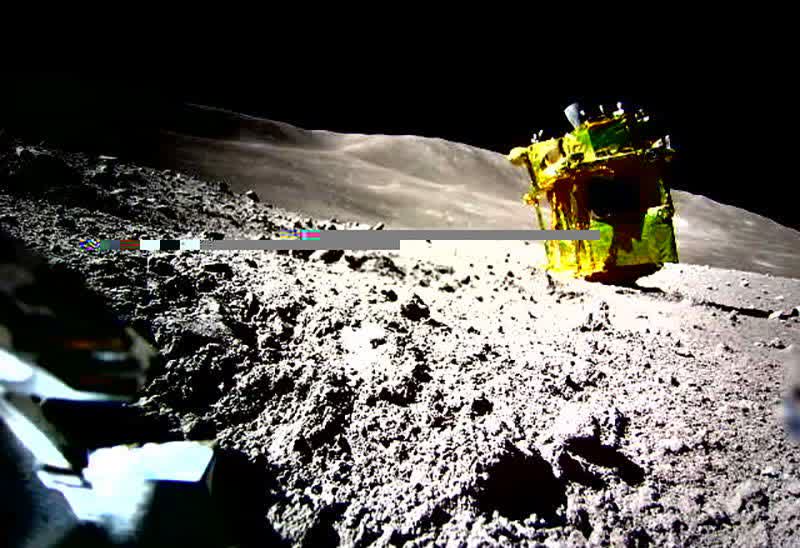We meant to do that: Japan's SLIM lunar lander crashed into the Moon last week. The "Smart Lander for Investigating Moon" was supposed to touch down on January 20, which it did. Unfortunately, it landed on its head. Japan's space agency still considers the mission a success.
The SLIM was a joint effort between Japanese toy company Takara Tomy, Japan Aerospace Exploration Agency (JAXA), Sony, and Doshisha University to design a craft capable of "super-precise" moon landings. In that regard, it succeeded. Aside from landing nose first, the SLIM touched down 55 meters east of its landing zone (LZ). Usually, scientists are happy if they can land within several kilometers of their intended LZ.
Handlers first suspected something had gone wrong when they noticed the craft's solar panels were not generating power after landing. Retrieved telemetry data showed that the craft's engines lost power during descent. The malfunction prevented the SLIM from rotating to its upright landing position.

However, the mission was not a total failure. The SLIM successfully deployed an X-ray telescope for NASA's X-Ray Imaging and Spectroscopy Mission, or XRISM, into low-Earth orbit shortly after launch on September 6, 2023. Space.com notes that it also released two small spherical robot rovers – LEV-1 and LEV-2 – despite being overturned.
Photos taken by the tennis-ball-sized LEV-2 (also called SORA-Q) and transmitted to ground control by LEV-1 confirmed that the SLIM landed upside down. It's clear from the tweeted photo that it was a "soft landing" since the craft looks fully intact with very little damage.
The Lunar Excursion Vehicle 2 (LEV-2 / SORA-Q) has successfully taken an image of the #SLIM spacecraft on the Moon. LEV-2 is the world's first robot to conduct fully autonomous exploration on the lunar surface. https://t.co/NOboD0ZJIr pic.twitter.com/mfuuceu2WA
– JAXA Institute of Space and Astronautical Science (@ISAS_JAXA_EN) January 25, 2024
"This image was transferred to the ground via LEV-1, and this confirmed that the communication function between LEV-1 and LEV-2 worked normally," JAXA said in a statement.
Mission engineers say the SLIM is "silent but still alive." The solar panels could be broken, but JAXA hopes they are intact enough to restore power when the sun lights up the landing site on February 1.
Despite its unusual orientation, the team considers the mission a success, calling it the first Japanese lunar landing and making it the fifth country to deploy equipment on the Moon.
"With this, SORA-Q became the first Japanese robot to land on the moon and take pictures," said Kintaro Toyama, chairman and representative director of Takara Tomy. "This success is thanks to everyone involved and everyone who supported us as we pursued our dreams together. Thank you from the bottom of my heart."
Very few recent attempts to land a craft on the Moon have succeeded. Israel, the UAE, Europe, India, Russia, and even the US have all failed at least one mission to land on the Moon since 2018. Japan had wrecked at least two other landers before the SLIM, showing it's not so easy to hit an object traveling at 2,300 miles per hour, even if it's as big as the Moon.